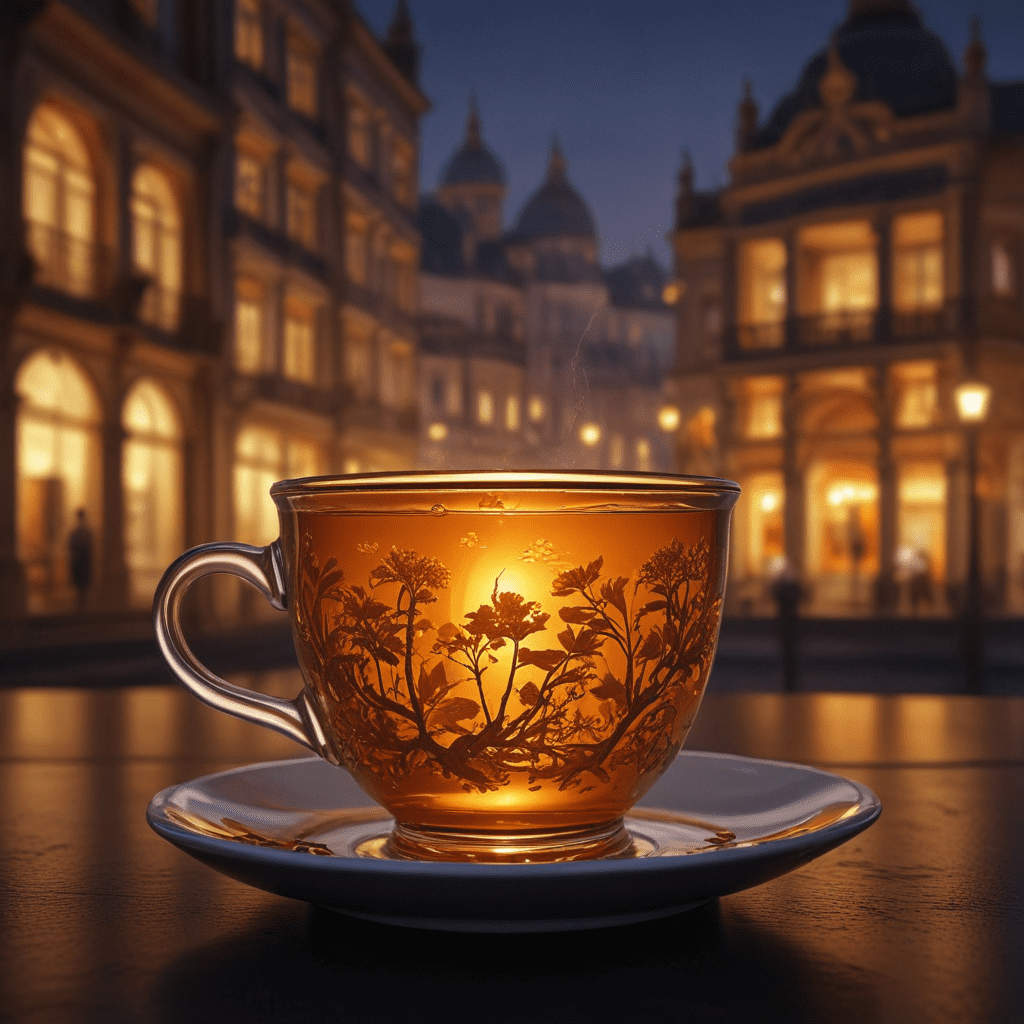1. Introduction: A Blend of Culture and Design
India, a land steeped in history and tradition, boasts a unique relationship between tea culture and architecture. The introduction of tea in the 19th century not only transformed social customs but also left an indelible mark on the country's architectural landscape. Tea plantations, with their sprawling estates and distinctive bungalows, became a testament to colonial influence and local craftsmanship. The influence of tea extended beyond plantations, shaping the design of tea houses, cafes, and even traditional tea stalls, creating spaces that reflect the cultural significance of this beloved beverage.
2. The Influence of Tea Plantations on Architecture
The architectural styles of tea plantations in India are a fascinating blend of colonial and vernacular influences. Tea bungalows, often perched amidst lush greenery, exhibit colonial architectural elements such as verandas, sloping roofs, and intricate woodwork. These bungalows, serving as residences for plantation managers, reflected a blend of European sensibilities and local adaptations.
Tea factories, on the other hand, showcase a more utilitarian design, prioritizing functionality and efficiency. Constructed with materials like brick and corrugated iron, these factories often incorporated elements of vernacular architecture, ensuring harmony with the surrounding environment. The use of natural materials like wood and stone further emphasized the connection between tea and nature.
3. Tea Houses and Cafés: Contemporary Interpretations
Modern tea houses and cafes in India offer a contemporary interpretation of tea-inspired design. While some retain traditional elements like wooden furniture and exposed brick walls, others embrace modern aesthetics, incorporating minimalist designs and sleek furnishings. These spaces often serve as social hubs, fostering a sense of community and offering a haven for tea enthusiasts.
4. Traditional Tea Stalls: A Slice of Everyday Life
Traditional tea stalls, ubiquitous across India, offer a glimpse into the everyday lives of the people. These modest structures, often no more than a simple counter and a few stools, are a testament to the unpretentious nature of tea culture in India. The use of simple materials like canvas and wood reflects the local context and affordability. Tea stalls serve as much more than just places to buy tea; they are community gathering places, where people from all walks of life come together to socialize and share stories.
5. The Impact of Tea on Urban Design
The influence of tea extends beyond plantations and cafes, shaping the urban landscape of Indian cities. Tea gardens and plantations have often been instrumental in the development of parks and recreational spaces within cities, providing residents with green oases amidst the urban hustle and bustle. These green spaces serve as a reminder of the importance of nature and the tranquility that tea offers.
6. Case Studies: Iconic Tea-Inspired Buildings
The Tata Tea House in Kolkata, India
This iconic building, designed by renowned architect Charles Correa, is a unique example of tea-inspired architecture. Built in 1984, the tea house features a traditional Bengali thatched roof, a nod to the region's vernacular architecture. The use of natural materials like brick and wood creates a warm and inviting atmosphere. The interior boasts a central courtyard, allowing natural light to illuminate the space and showcasing the connection between tea and nature. The Tata Tea House stands as a testament to the harmonious blend of modern design and traditional influences.
The Tea Museum in Munnar, India
Nestled amidst the rolling hills of Munnar, the Tea Museum is a fascinating journey through the history of tea in India. The museum, housed in a colonial-era bungalow, showcases artifacts, photographs, and exhibits that chronicle the evolution of tea cultivation and production in the region. The architecture of the bungalow itself reflects the colonial influences on tea plantation design, with its spacious verandas and intricate wooden detailing. The Tea Museum is a valuable resource for understanding the cultural and economic significance of tea in India.
7. The Future of Tea-Inspired Design
The future of tea-inspired design holds exciting possibilities. Emerging trends suggest an increasing focus on sustainability and the integration of traditional elements with modern technology. Architects and designers are exploring the use of recycled materials, energy-efficient construction practices, and innovative building techniques to create tea-inspired spaces that are both environmentally friendly and aesthetically pleasing. The fusion of traditional tea culture with modern design sensibilities promises to shape the future of tea-inspired architecture in India.
8. Conclusion: A Legacy of Flavor and Form
Tea-inspired design in India is a testament to the enduring legacy of this beloved beverage. From the sprawling tea plantations to the bustling tea stalls, tea has left an indelible mark on the country's architectural landscape. The unique blend of traditional and modern elements, the use of natural materials, and the focus on functionality and social interaction make tea-inspired architecture a fascinating and evolving field. As India continues to embrace tea, its architecture will undoubtedly continue to reflect the cultural significance and enduring appeal of this timeless drink.
FAQ:
What are the most popular tea-growing regions in India?
Assam, Darjeeling, Nilgiris, and Munnar are some of the most renowned tea-growing regions in India.
What are the different types of tea produced in India?
India produces a wide variety of tea, including black tea, green tea, oolong tea, and white tea.
What is the significance of tea in Indian culture?
Tea is an integral part of Indian culture, serving as a symbol of hospitality, social interaction, and relaxation.
How has tea influenced Indian architecture?
Tea plantations, tea houses, cafes, and traditional tea stalls are just some examples of how tea has influenced Indian architecture.
What is the future of tea-inspired design in India?
Emerging trends suggest a focus on sustainability, integration of modern technology, and preservation of traditional elements in tea-inspired design.


